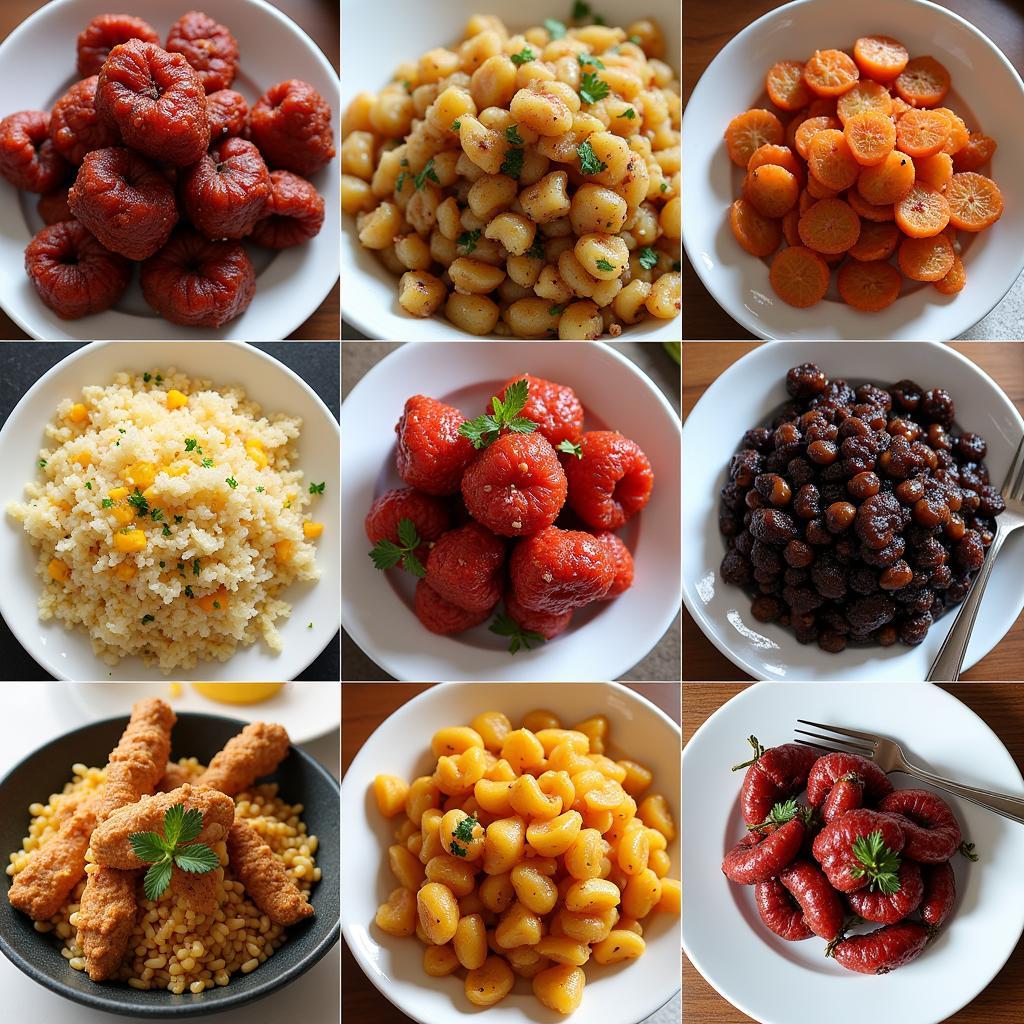Angu Brazilian Food, a staple in Brazilian cuisine, offers a comforting and flavorful experience that reflects the country’s rich culinary heritage. From its humble beginnings to its modern interpretations, let’s explore the world of angu and discover why it holds such a special place in Brazilian hearts and stomachs. global food box
What is Angu Brazilian Food?
Angu is a thick, porridge-like dish made primarily from cornmeal, cassava flour, or a combination of both. It’s a versatile food, acting as a blank canvas for a variety of accompanying dishes, from rich stews to flavorful meats and beans. Angu is a testament to the ingenuity of Brazilian cooks, utilizing simple ingredients to create a satisfying and nourishing meal. Its smooth, creamy texture provides the perfect complement to savory sauces and broths.
The History and Cultural Significance of Angu
Angu’s history dates back centuries, with roots in African culinary traditions brought to Brazil during the period of slavery. Originally made with flour from ground African grains, angu evolved to incorporate locally available ingredients like cornmeal and cassava flour, adapting to the Brazilian landscape and becoming a symbol of resilience and cultural fusion. It’s a dish that tells a story, connecting the past to the present.
Different Types of Angu Across Brazil
While the basic concept of angu remains consistent, regional variations exist across Brazil, reflecting the diverse culinary landscape of the country. In some regions, it’s prepared with a thicker consistency, while in others it’s thinner, almost soup-like. Some recipes incorporate additional ingredients like herbs and spices, creating unique flavor profiles. Exploring these variations offers a fascinating glimpse into the regional nuances of Brazilian cuisine.
 Regional Angu Variations
Regional Angu Variations
How to Make Perfect Angu at Home
Making angu is a relatively straightforward process, requiring just a few simple ingredients and a little patience. Traditionally, it’s cooked on a stovetop in a heavy pot, stirring constantly to ensure a smooth and creamy texture. The key is to achieve the perfect balance of thickness, avoiding lumps and ensuring a consistently smooth finish.
Serving and Pairing Angu: A Culinary Adventure
Angu is rarely eaten on its own. Its mild flavor makes it the perfect companion for a variety of dishes, acting as a base to soak up rich sauces and gravies. Popular pairings include feijoada (black bean stew), frango com quiabo (chicken with okra), and various meat and vegetable stews. The possibilities are endless, limited only by your culinary imagination. world food box
“Angu is more than just a side dish; it’s an integral part of the Brazilian culinary experience. Its simplicity allows the flavors of the accompanying dishes to truly shine.” – Maria Silva, Brazilian Culinary Historian.
Angu: A Nutritious and Affordable Meal
Beyond its delicious taste and cultural significance, angu is also a nutritious and affordable meal option. It’s a good source of carbohydrates, providing sustained energy, and it’s also relatively low in fat. Its affordability makes it a staple in many Brazilian households, providing a filling and satisfying meal without breaking the bank. food flag
“Growing up, angu was a regular part of our family meals. It’s a dish that brings back so many fond memories of home-cooked meals and shared moments with loved ones.” – Carlos Oliveira, Brazilian Chef. east 4th food mart
Conclusion: Embracing the Simplicity and Flavor of Angu Brazilian Food
Angu Brazilian food is a true testament to the power of simple ingredients and culinary tradition. From its rich history to its diverse regional variations, angu offers a unique and satisfying culinary experience. So, next time you’re looking for a comforting and flavorful meal, embrace the simplicity of angu and discover the heart of Brazilian cuisine.
FAQ
- What is the main ingredient in angu?
- What is the texture of angu like?
- Is angu gluten-free?
- What are some popular dishes to serve with angu?
- How long does it take to cook angu?
- Can angu be made ahead of time?
- Where can I find authentic Brazilian angu recipes?
Common Questions About Angu:
- What can I substitute for cornmeal or cassava flour when making angu? While traditional angu is made with cornmeal or cassava flour, you can experiment with other flours like polenta or even rice flour for a slightly different texture and flavor.
- Can angu be reheated? Yes, angu can be easily reheated on the stovetop or in the microwave. Add a little water or broth while reheating to prevent it from drying out.
Further Exploration of Brazilian Cuisine:
Check out other resources on Brazilian cuisine to delve deeper into the culinary traditions of this vibrant country. You might want to learn more about feijoada, moqueca, or pão de queijo.
If you need any assistance, feel free to contact us via Phone: 02437655121, Email: minacones@gmail.com or visit us at: 3PGH+8R9, ĐT70A, thôn Trung, Bắc Từ Liêm, Hà Nội, Việt Nam. Our customer service team is available 24/7.